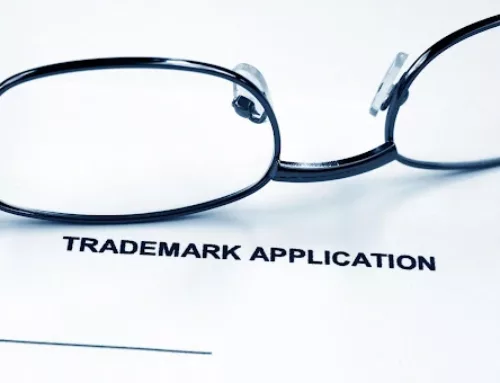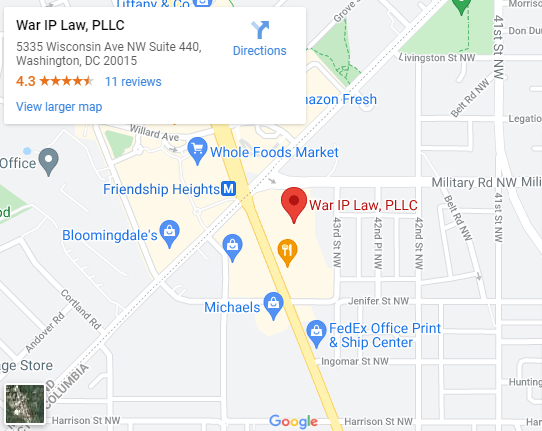Trademark rights are often transferred from one party to another. The transfers may well be temporary, such as through licensing, or permanent, by way of assignment.
There are many reasons for transferring trademark rights. For instance, in the event of reorganization or business acquisition, you may have to assign trademark ownership. Failure to do so may result in trademark invalidation For this reason, you also need to record trademark assignments for state registrations.
If you need information or legal assistance on transferring your trademarks and avoiding ownership or validity issues associated with not properly recording the assignment, feel free to contact us at War IP Law. Our experienced trademark attorney will be more than happy to walk you through the process of trademark assignments.
Steps in Transferring a Trademark
There are two major steps in transferring a trademark;
- Documenting the transfer between the parties using a trademark assignment
- Recording the signed trademark assignment with the USPTO
Documenting Transfer Between the Parties Using a Trademark Assignment
 A signed trademark assignment is necessary before you can proceed with the filing the transfer ownership with the USPTO. A trademark assignment is a document signed by the original owner (“assignor”) transferring ownership of the trademark to a new owner (“assignee”). Typically, only the assignor needs to sign the trademark assignment. The document contains the following:
A signed trademark assignment is necessary before you can proceed with the filing the transfer ownership with the USPTO. A trademark assignment is a document signed by the original owner (“assignor”) transferring ownership of the trademark to a new owner (“assignee”). Typically, only the assignor needs to sign the trademark assignment. The document contains the following:
- Terms of the transfer
- Payment terms
- Rights being assigned
- USPTO registration number of the trademark
- Any representations and warranties from the current owner of the trademark which guarantees transfer of goodwill associated with the marks.
- The current owner typically represents to the new owner that they own all rights to the trademark
- The current owner has the authority to transfer the mark
- The current owner has not known pending claims against the trademark or its use
If multiple trademarks and service marks are involved, a single trademark assignment may include a schedule that lists all the trademarks to be transferred.
Keep in mind that Intent-To-Use (“ITU”) trademark applications are generally not transferable prior to the original applicant submitting evidence of use of the mark by filing a Statement of Use. There are certain exceptions to this rule which will require special language in the trademark assignment to effect a proper transfer of an ITU mark.
Recording the signed trademark assignment with USPTO
An executed trademark assignment must be properly recorded with the USPTO to establish a clear chain of title from the old owner(s) to the new owner(s). This will enable the public to search and identify the new trademark owner. The USPTO provides helpful online resources on trademark assignments which are searchable using any of the following data:
- Reel/frame number
- Serial number
- Registration number
- International registration number
- Assignor name
- Assignee name
- Correspondent name
- Applicant name
- Domestic representative
The USPTO has a simple form available online that you can use to record the assignment. You are required to fill out the form and submit a copy of the executed transfer agreement to complete the assignment process—the assignment is typically processed within one business day if filed online. There is also a $40 filing fee to record the trademark assignment.
Another option is to file a paper version of the online form. However, this may take some precious time since paper filed assignments typically take up to one week to be recorded (versus one day for online filings).
Responsibilities of the new trademark owner
The assignee, or new trademark owner, should diligently track any deadlines for responding to outstanding Office Actions and renewing any registered marks. A reputable intellectual property law firm will be helpful in tracking all relevant deadlines of the transferred trademark filings.
Bear in mind that a transferred trademark application or registration is not treated in the same way as a transferred patent. Unlike transferred patents, which do not impose obligations on the patent owner to use the patent, trademark owners are obligated to use the transferred trademark on the pertinent goods or services identified in the trademark applications and/or registrations. Ceasing the use of the marks on the relevant goods or services could jeopardize rights in the transferred mark.
Need information on transferring trademarks?
Our trademark lawyers at War IP Law will help you with the process of trademark transfers. At War IP Law, we recognize the importance of maintaining a strong trademark and the business harm that can result from trademark infringement. An attorney that is familiar with trademark practice and procedure can lead you through the U.S. or international trademark registration and trademark transfer process in order to uphold your intellectual property rights and provide you legal protection from infringement. Call us now for a free initial consultation.





